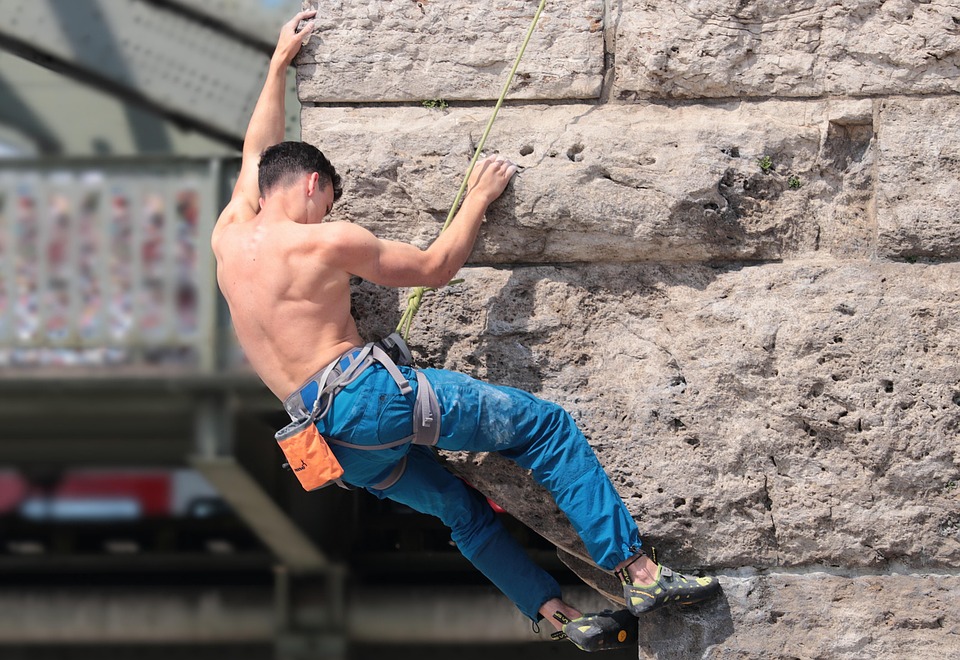Climbing, an exhilarating blend of physical challenge and mental strategy, has evolved into various styles, each with its unique characteristics, techniques, and environments. Whether you’re scaling indoor walls or tackling towering peaks, understanding the nuances of different climbing styles can enhance your experience and skills. This article explores the diverse world of climbing, from the roots of bouldering to the challenges of alpine climbs.
Bouldering
What Is Bouldering?
Bouldering is the art of climbing short, yet often challenging problems without the use of ropes or harnesses. Climbers typically ascend rock formations or artificial climbing walls, with the height usually not exceeding 20 feet. Safety measures such as crash pads and spotters are crucial, as falls are an inherent risk.
Techniques and Equipment
Bouldering requires a combination of strength, technique, and problem-solving skills. Climbers often utilize:
- Dynamic Movements: Requiring explosive power to reach distant holds.
- Static Techniques: Utilizing careful foot placement and balance.
- Footwork: Precision in placing feet is paramount, as bouldering relies less on upper body strength than technique.
Minimal gear is needed—mainly climbing shoes, chalk, and crash pads. Bouldering encourages creative problem-solving, as climbers often must strategize their moves to navigate routes, known as ‘problems.’
Sport Climbing
Overview of Sport Climbing
Sport climbing involves ascending cliffs or rock faces equipped with fixed anchors for protection. Climbers use ropes and harnesses for safety, allowing them to tackle higher walls with extended routes.
Gear and Techniques
Essential sport-climbing gear includes:
- Climbing Harness: For safely attaching to ropes.
- Quickdraws: To connect the rope to fixed anchors.
- Belay Device: For managing the climbing rope.
Sport climbing requires strength, endurance, and the ability to read routes. Climbers must also be proficient in belaying, a technique that involves managing the rope for their partner.
Traditional Climbing
Understanding Traditional Climbing
Traditional (or "trad") climbing emphasizes placing gear into cracks and fissures in the rock for protection. Unlike sport climbing, where fixed anchors are pre-placed, climbers must carry and deploy their own gear as they ascend.
Skills and Equipment
Trad climbers use various gear:
- Cams and Nuts: For securing protection in rock features.
- Climbing Rope: A dynamic rope is essential for falls.
Trad climbing demands a high level of skill, as climbers must assess rock quality, placement techniques, and potential fall risks. It requires strong judgment and adaptability; each climb can present unique challenges.
Ice Climbing
What Is Ice Climbing?
Ice climbing entails ascending frozen waterfalls, ice formations, or steep snow and rock faces. It’s a physically demanding discipline that requires specific techniques and gear.
Equipment and Techniques
Essential ice climbing gear includes:
- Ice Axes: For digging into ice for purchase.
- Crampons: Spikes worn on boots to assist in traction.
Ice climbers must master specific techniques, including swinging axes and kicking crampons effectively. Conditions can change rapidly, making risk assessment and decision-making crucial.
Alpine Climbing
What Is Alpine Climbing?
Alpine climbing refers to ascending high-altitude mountains, often requiring a combination of climbing skills and endurance. It can include rock, ice, and mixed climbing, all in a challenging environment that demands resilience.
Gear and Skills
Essential gear for alpine climbing includes:
- Pick Axes and Crampons: For both rocky and icy terrain.
- Ropes and Protection: Similar to what is used in sport and trad climbing.
Alpine climbing necessitates a broad skillset. Climbers must be adept in navigation, weather interpretation, and self-rescue. The environment offers additional challenges, such as altitude sickness and sudden weather changes, requiring climbers to be prepared for rapid adaptations.
Conclusion
From the mental puzzles of bouldering to the rigorous demands of alpine climbing, each climbing style offers unique challenges and rewards. Exploring these variations not only sharpens your skills but also deepens your appreciation for the sport. Whether you’re a novice or an expert, immersing yourself in different climbing styles can expand your horizons, allowing you to connect with the breathtaking beauty of the natural world in versatile and profound ways. As the climbing community continues to grow, so does the diversity of experiences—encouraging climbers to push their limits, explore new terrains, and truly embrace the spirit of adventure.



